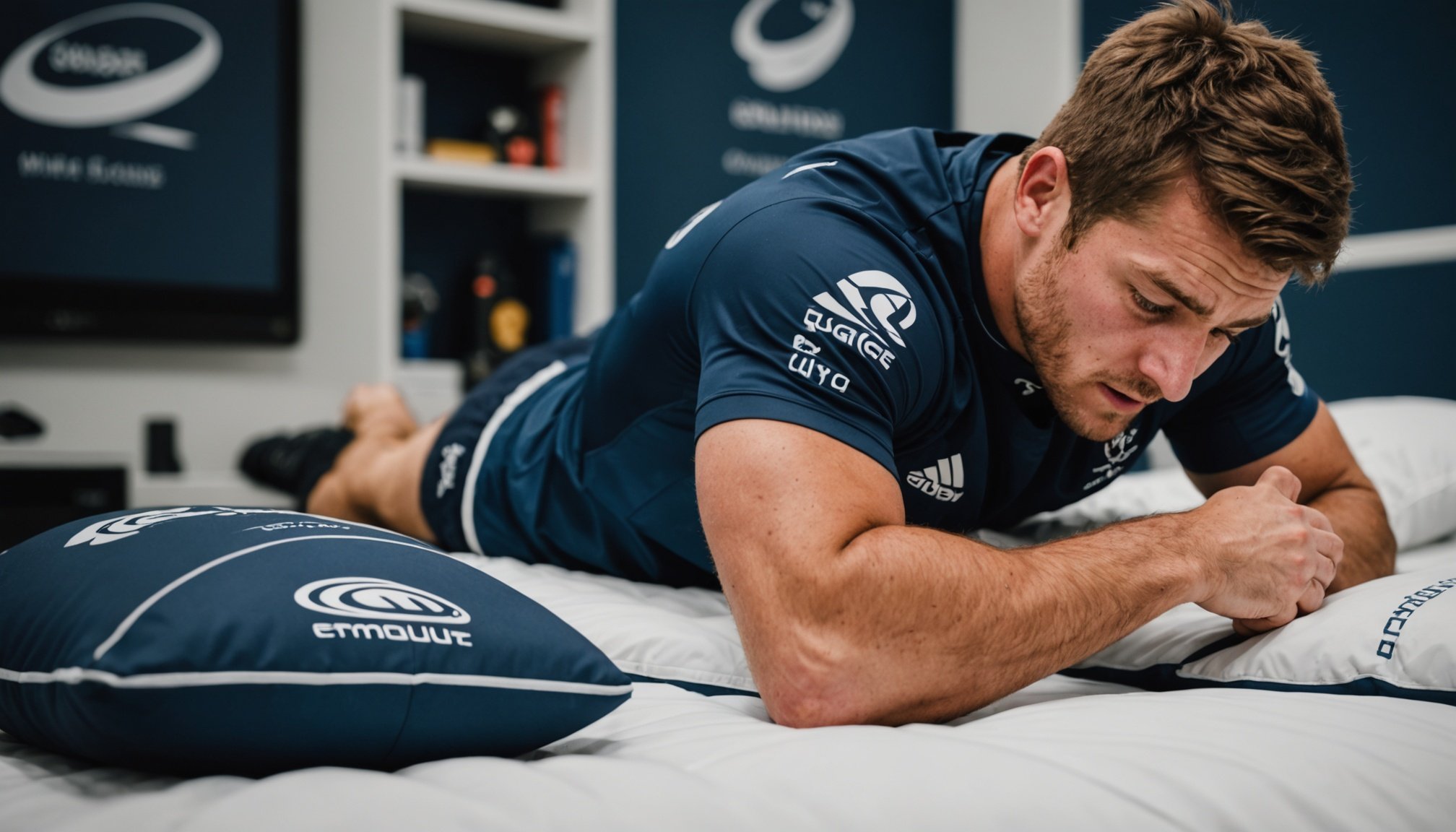Overview of Sleep Tracking Technology in Sports
Understanding sleep tracking technology and its application in sports science is crucial for enhancing athlete recovery. Sleep tracking technology refers to devices and applications that monitor sleep patterns, cycles, and quality. These include wearable devices like smartwatches, specialized sleep bands, and non-wearable options such as sensors placed under mattresses.
Incorporating such technology is vital as it evaluates sleep’s intricate role in athletic performance. Quality sleep facilitates physical recovery, cognitive function, and emotional resilience. Disruption in sleep patterns can lead to decreased performance and heightened risk of injury.
Also to discover : Unraveling the ethical quagmires and health implications of genetic engineering in sports performance
Recent advancements have refined sleep tracking accuracy, providing athletes with comprehensive insights. Devices now track various parameters, from heart rate variability to REM sleep cycles, offering a holistic view of one’s sleep health. Innovations include AI-driven analytics, which predict and personalize recovery plans, tailored to an athlete’s unique physiology.
Integrating sleep data with training regimens determines optimal periods for intense workouts versus restorative sessions, aligning physical exertion with recovery capacity. This methodology supports sports professionals in maximizing their potential while minimizing burnout risks. As technology continues to evolve, its application in athlete recovery will likely become increasingly sophisticated, supporting enhanced performance levels across sports disciplines.
Also read : Essential recovery strategies for athletes: mastering post-heat training cooling techniques
Impact of Sleep on Athlete Recovery
Sleep and recovery are intrinsically linked in promoting optimal athletic performance and maintaining overall player health. Sleep cycles, such as REM (Rapid Eye Movement) and non-REM, play a critical role in physiological and mental recuperation. During REM, the body undergoes emotional processing and memory consolidation, crucial for cognitive functions. Non-REM stages, on the other hand, support tissue growth and repair, boosting physical recovery post-exercise.
Research has underscored the significance of adequate sleep duration, usually between 7-9 hours for adults, in boosting performance metrics. A study published in the Journal of Strength and Conditioning Research highlighted enhanced performance and improved mood states in athletes with sufficient sleep. Conversely, sleep deprivation can impair reaction times, decision-making, and increase injury risk.
Case studies further illustrate the role of sleep in recovery. For instance, a professional basketball team implemented sleep tracking to optimise players’ sleep patterns, witnessing a marked improvement in recovery times and reduced injury occurrences. This demonstrates how integrating effective sleep strategies can impact performance and health positively. Exploring deeper strategies in sleep management can aid in further enhancing both recovery and performance.
Application of Sleep Tracking Technology in Rugby
Overview of Tools and Technologies
In the realm of rugby, sleep tracking technology has emerged as a pivotal component of athlete monitoring. Professional teams benefit from an array of devices that meticulously observe sleep patterns, ensuring optimal recovery and performance. Wearable technologies like advanced wristbands and smartwatches are popular among players for their convenience and precision, seamlessly integrating into daily routines.
Non-intrusive methods, such as mattress sensors, are gaining traction for their ability to deliver comprehensive sleep data without interfering with sleep quality. These tools analyze metrics like sleep duration, heart rate variations, and REM cycles, offering invaluable insights into players’ recovery states.
Implementation in Training Regimens
Integrating sleep tracking into rugby training regimens involves more than just wearing devices. Teams strategically utilize collected data to tailor training intensity and schedule restorative periods. Analytical tools leverage this information to predict performance dips, allowing coaches to adjust plans proactively, balancing physical exertion with athlete well-being.
Case Studies from Professional Teams
Several rugby teams have successfully implemented sleep tracking, witnessing significant improvements in recovery metrics. One notable case involved utilizing sleep data to reduce injury rates and enhance performance consistency. These successes underscore the tangible benefits of incorporating sleep tracking into athletic programs, leading to competitive advantages and improved athlete health.
Expert Insights on Sleep Tracking in Rugby
Insights from sports medicine experts reveal how sleep tracking technology is reshaping rugby. Dr. James Cartwright, a prominent sports scientist, describes the integration of these tools as “a game-changer that sets new standards in athlete recovery.” His analysis underscores the significant impact on player longevity, attributing it to technological precision in detecting sleep deficiencies that affect performance over time. Dr. Cartwright notes, “By understanding specific sleep disruptions, we can tailor rehabilitation and training methods effectively.”
Recommendations for both coaches and players are abundant from experts. Dr. Anna Thompson, a leading trainer, suggests athletes should “focus on integrating sleep data into broader performance metrics.” This alignment amplifies the efficiency of recovery strategies, offering a more comprehensive overhaul of traditional training practices. Her insights advocate for a balanced approach, emphasizing the importance of not just collecting sleep data but interpreting and applying it for practical enhancements in team and individual strategies.
Experts agree that sleep tracking not only aids in recuperation but also offers preventative benefits, effectively reducing injury risks. Engaging with this technology, trainers and players alike are urged to leverage its capabilities, fostering a culture aware of its indispensable role in sports performance.
Future Trends in Sleep Tracking Technology
The future of sports science looks promising with emerging innovations in sleep tracking technology. Specialists anticipate advancements will enhance precision and usability, contributing significantly to innovation in recovery. Upcoming trends aim to integrate more seamless and unobtrusive monitoring, potentially involving smart textiles that blend into athletic wear. Such innovations can deliver continuous sleep data with minimal disruption, fostering improved athlete well-being.
Artificial intelligence and machine learning are set to revolutionise sleep tracking by offering real-time feedback and predictive insights customised to athletes’ physiological profiles. This development could refine recovery strategies and optimise training efforts with unprecedented accuracy. With ongoing enhancements, the implications for rugby and other sports are substantial. Enhanced algorithms could pinpoint the most beneficial recovery protocols linked to specific types of exertion, ensuring athletes achieve peak performance while minimising fatigue.
Moreover, continuous research underscores the growing significance of sleep’s role in sports performance. Future studies may delve into the intricate relationships between varying sleep parameters and athletic outputs, informing new methodologies. As the technology trends evolve, integrating these insights into sports science will undoubtedly offer expansive benefits, positioning sleep tracking as an essential tool for elite athletic training and performance enhancement.
Practical Tips for Implementing Sleep Tracking
Implementing sleep tracking technology effectively can transform an athlete’s recovery process. Selecting the right technology is crucial. Consider devices that monitor multiple parameters, such as heart rate variability and sleep stages, to gain comprehensive insights. This helps in crafting tailored recovery plans specific to individual needs.
Once the appropriate device is chosen, focus on optimising recovery through consistent usage. Athletes should ensure their devices are properly calibrated and used under similar conditions each night for accurate data collection. This consistency aids in identifying patterns and anomalies in sleep behaviour, essential for making informed adjustments.
Integration of sleep tracking data into regular training analysis is also vital. By reviewing sleep metrics alongside performance data, athletes and coaches can identify correlations between sleep quality and training outcomes. For example, if data reveals that deep sleep correlates with improved performance, training schedules can be adjusted to encourage more restful nights before competitions.
To enhance overall athlete well-being, incorporate best practices for sleep hygiene. Encourage habits like maintaining a consistent sleep schedule, limiting caffeine intake close to bedtime, and creating a calming pre-sleep routine. These strategies can significantly elevate sleep quality, synergising with the data gathered from tracking technologies to maximise recovery.



